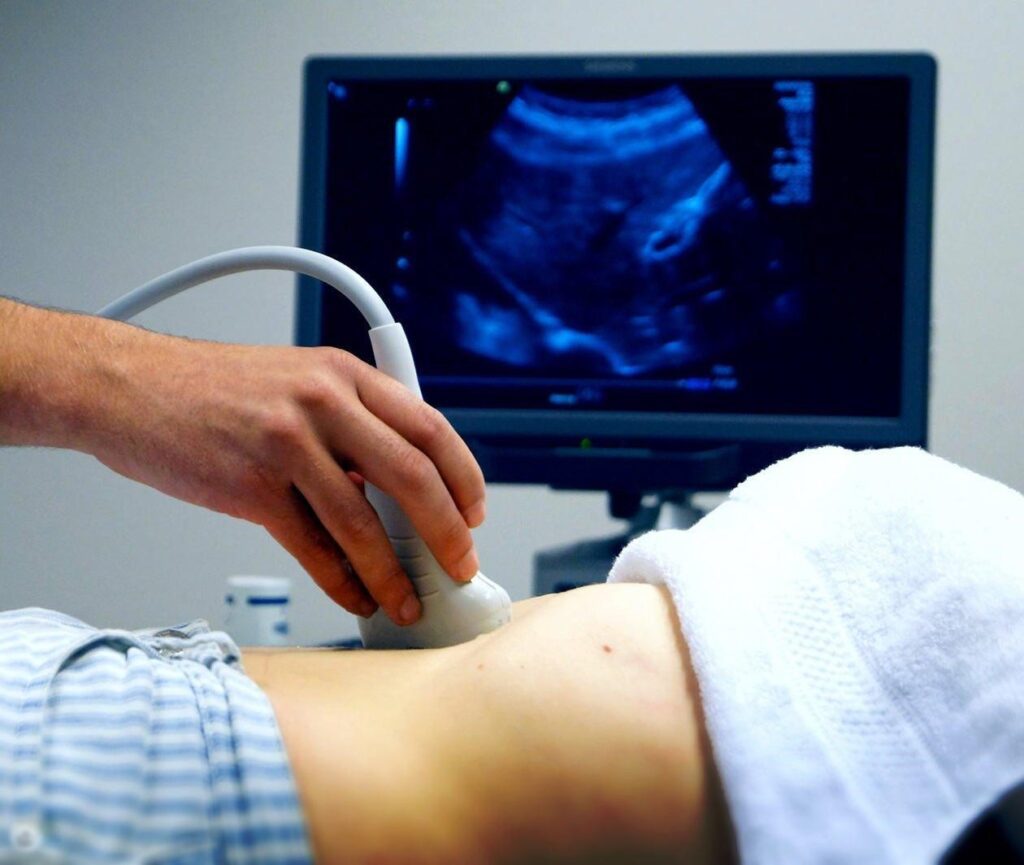The benefits of ultrasound for women have been seen in breast cancer and Pregnancy. For example, a new ultrasound scan machine is being used in breast cancer, which is more precise in identifying cancerous lumps. The machine is also able to detect much smaller lumps than the old machines. This means that more cases can be caught early and treated successfully.
In Pregnancy, ultrasound monitors the baby’s development, checks for any anomalies, and estimates the due date. Ultrasound is non-invasive and does not use ionizing radiation, making it a safe method for monitoring the baby during Pregnancy. In addition, a new kind of ultrasound machine is providing better images and bringing many benefits to women.
5 Benefits of Ultrasound for Women

The key five benefits of ultrasound for women are detailed below, so let’s dig deep for more information.
1. Noninvasive Procedure

Many people are worried about pain when they think about ultrasound. It is a common concern, but it is also important to remember that ultrasound is noninvasive. This means that there is no poking or prodding required. The wand is simply pressed against the skin and moved around. The patient may feel an anxiety or pressure but shouldn’t feel any discomfort.
The good news is that ultrasound is an incredibly effective tool for diagnosing problems. It can be used to look at a variety of different organs and systems, and it doesn’t require any special preparation. So, if you’re worried about pain, there’s no need to be. Ultrasound is a safe and easy way to get the information you need.
2. Less Exposure to Ionizing Radiations

A common diagnostic tool, ultrasound, is a type of imaging that uses sound waves to create images of your internal organs. Unlike X-rays and CT scans, ultrasound does not use ionizing radiation, making it a safe choice for pregnant women and young children. In addition, ultrasound is noninvasive and does not require the use of contrast agents, making it a convenient option for patients with renal impairment. Although ultrasound is generally safe and well-tolerated, there are a few potential risks to be aware of.
These include the potential for thermal injury, echogenic focus artifact, and ultrasound-induced cavitation. Overall, ultrasound is a safe and effective diagnostic tool that can obtain detailed images of your internal organs without the risks associated with ionizing radiation.
3. Quick and Clear Reports

X-rays are a type of electromagnetic wave that is entered into the body, providing detailed reports of bones and other dense tissues. However, X-rays cannot penetrate soft tissues, making them less helpful in diagnosing problems in organs such as the urinary bladder, ovaries, uterus, cervix, and fallopian tubes. Ultrasound waves, on the other hand, can safely pass through soft tissues with no harmful effects.
This makes ultrasound an ideal tool for taking images of organs and other soft tissues. In addition, ultrasound can be used to monitor a developing fetus in the womb, providing valuable information about the baby’s health. Thanks to the unique capabilities of ultrasound, this imaging modality plays an important role in diagnosing and treating a wide range of medical conditions.
4. Accessibility

Among all of the imaging technologies available, ultrasound is both the most accurate and the most cost-effective. This technology is especially useful for diagnosing problems with the heart, lungs, and abdominal organs. In addition, ultrasound machines are portable and relatively inexpensive, making them accessible to a wide range of healthcare providers. As a result, ultrasound is essential for reducing healthcare costs and improving patient outcomes.
5. Effective in Prenatal Care

Ultrasound is a high-tech radiology diagnostic tool that uses high-frequency sound waves to produce images of the inside of the body. It is most commonly associated with Pregnancy, as it is used to obtain images of the developing fetus. However, ultrasound can also be used to assess other organs and structures within the body, including the heart, blood vessels, kidneys, and liver. In addition, ultrasound can be used to guide procedures such as biopsies and injections. In many cases, ultrasound can provide a clearer picture of what is going on inside the body than other imaging modalities such as X-ray or MRI. As a result, it has become a staple in both prenatal care and diagnostic medicine.
Final Thought
Ultrasound scans are commonly used in women’s health, as they allow doctors to noninvasively check on the health of both the mother and the baby. For example, in early pregnancy, an ultrasound can be used to confirm a heartbeat’s presence and estimate the due date. Later in pregnancy, an ultrasound can be used to check the baby’s position and monitor the baby’s growth. Ultrasound can also be used to evaluate the placenta and to look for any signs of problems, such as placental abruption or intrauterine growth restriction.
In addition, ultrasound can be used to guide procedures such as needle biopsies or amniocentesis. Furthermore, ultrasound can be used post-delivery to check the baby’s health and assess the uterus for any postpartum hemorrhage. Overall, ultrasound is a versatile tool that can play an important role in monitoring and diagnosing women’s reproductive health.













Leave a Reply